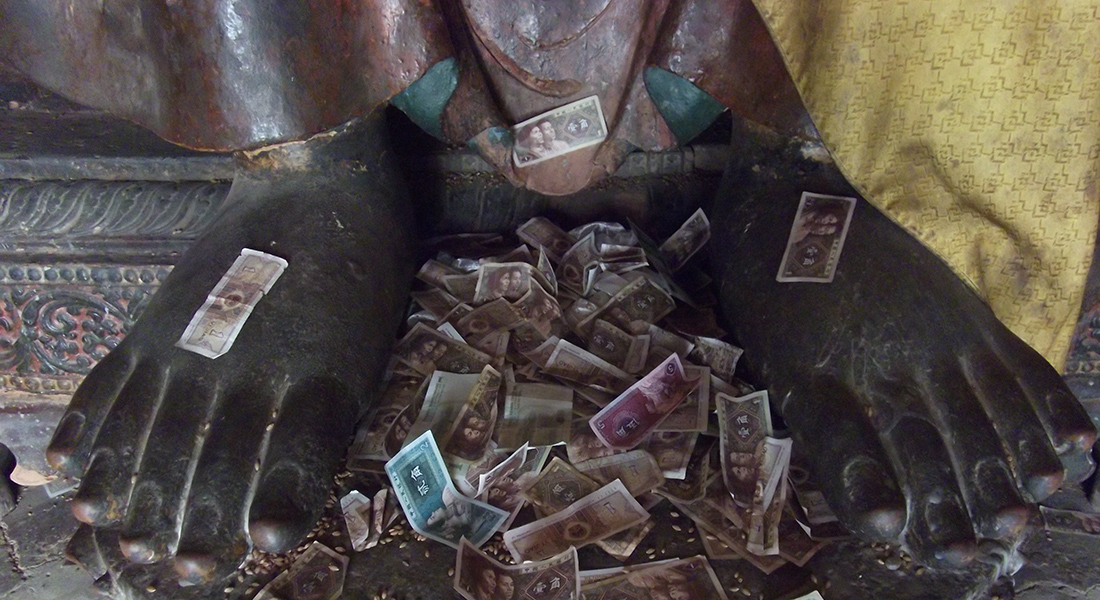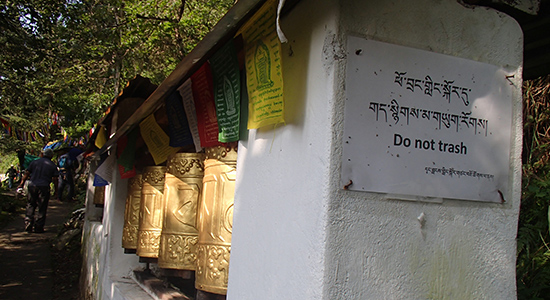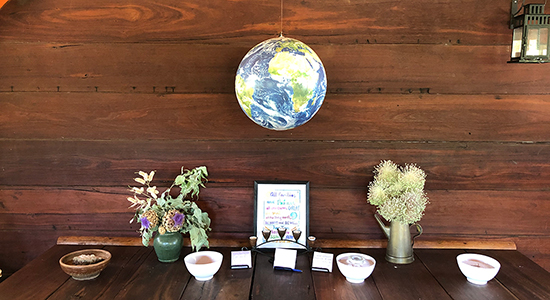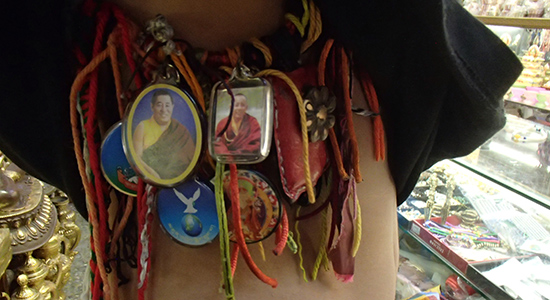Research focus areas
CCBS is a unique international center of excellence for contemporary Buddhist studies, which is otherwise lacking worldwide. The research centre provides a supportive environment in which scholars, students, and others can immerse themselves in the questions generated by our four strategic research areas:
- Buddhism and economy
- Buddhism and waste
- Buddhism in the Anthropocene
- Materials and materiality in Buddhism
Buddhism and economy
Headed by Stephen Christopher.
Buddhism and economy broadly encompasses the instrumentalisation of global Buddhism and the imbrication of spirituality and materialism. It draws from anthropological data on lived religion to elucidate how Buddhism can create symbolic capital, material value, soft power and discursive effects in various ethnographic contexts throughout the world.

Whilst Buddhism is often seen in popular culture as being untethered from, and even anathema to, economic considerations, recent scholarship demonstrates that wealth accumulation is a central part of Buddhism. Indeed, studies now recognise that rather than having a negative attitude toward wealth, financial acquisitiveness is frequently considered to be ideologically compatible with Buddhist principles about karmic reward or the propagation of the dharma.
Research at The Center for Contemporary Buddhist Studies looks at how Buddhism institutions and religious specialists are embedded in broader economic realites.
Buddhism and waste
Headed by Trine Brox.
The CCBS’ strategic research focus WASTE studies Buddhism from an unusual angle, namely from the perspective of destruction, breakdown, and death. We are interested in how the things that constitute Buddhism dematerialise and how they are imagined and handled.

The strategic research focus WASTE highlights a generally ignored but important aspect of object biographies that can help us understand the productive, social dimensions of religious materiality and lived religion. We are interested in how waste is produced or ends up in the religious field, what happens to it when it is proximate to sacred landscapes, people, objects, and messages, and when it consists of the remnants of rituals or is an object of faith and devotion. As stated in our first edited volume on this topic: “.. waste is diverse, ambiguous, and burdensome, but it is also productive.
Approaching its study through the categories of excess, discard, and afterlife offers a conceptualization of waste that can encompass the variety of post-consumption fates that await stuff that is used, abandoned, worn and consumed by people in Buddhist places or through Buddhist practices.” (page 21 in Brox and Williams-Oerberg (2022) Buddhism and Waste: The Excess, Discard, and Afterlife of Buddhist Consumption. Bloomsbury Academic, pp. 1-30.)
Buddhism in the Anthropocene
Headed by Dr. Saskia Abrahms-Kavunenko.
This research cluster looks at Buddhism in the Anthropocene epoch. The cluster engages how contemporary Buddhist ideas and practices are enmeshed in ecological relations, paying attention to how Buddhists relate to the more-than-human world, climatic changes, biodiversity loss, and pollutants.

This research cluster investigates how Buddhist communities are influencing, and being influenced by, the Anthropocene; the epoch wherein human behaviour is significantly impacting planetary wide geological and ecological processes.
It brings together scholars who are looking at how Buddhist communities are being affected by global warming, how Buddhist communities interact with polluted urban and rural ecologies, and how contemporary Buddhism relates to more-than-human worlds, including animals, spirits and sacred places.
The research cluster engages how Buddhists see themselves as related to and/or distinct from the ecologies that they inhabit. It investigates questions such as do atmospheric changes and new kinds of toxicity affect Buddhist frameworks and practices? How do Buddhist concepts and rituals enable or ameriolate ecological damage? What kinds of novel perspectives can Buddhism offer this new epoch?
Materials and materiality in Buddhism
Headed by Trine Brox.
Buddhism is often portrayed as anti-materialist, yet material things contribute in important ways to defining Buddhist places, communities, bodies and practices. The research field of things, the materials that they are made of, and their materiality are part of several research projects at the CCBS.

The research trajectory in the field of material religion has often been the ways in which material objects mediate the sacred. While inspired by this rich research field, at the Center for Contemporary Buddhist Studies, we are interested more broadly in the things that are found and used within Buddhism, not only as mediators, representations and symbols, but also as efficacious technology, objects of worship, and as religious goods that are produced and consumed.
Moreover, we want to understand both the socially constructed materiality of these things without neglecting the materials that constitute them. How does materials affect the ways in which they are experienced through the senses and utilised? How do they enact their own material properties? And what are their life trajectories, in and beyond their usage?
